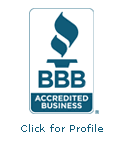Workplace Fire Safety Best Practices
Are you prepared? Download our FREE workplace fire safety checklist!
Fire safety is crucial for any business, not only to protect your property but also to ensure the safety of your employees and customers. As Fire Safety Month highlights the importance of preparation, now is the perfect time to review and strengthen your workplace fire safety protocols.
1. Conduct Regular Fire Risk Assessments
Every business should perform regular fire risk assessments to identify potential hazards and ensure compliance with local fire codes. Whether it’s overloaded electrical circuits or improper storage of flammable materials, early detection of these risks allows you to address them before they lead to disaster.
2. Install and Maintain Fire Protection Systems
A comprehensive fire protection system is essential for any commercial space. This includes fire alarms, sprinkler systems, and fire extinguishers. Partnering with Silco ensures that your business has the right equipment installed, maintained, and inspected according to industry standards. Don’t wait until it’s too late—regular inspections and maintenance can be the difference between a minor incident and a major catastrophe.
3. Develop and Implement a Fire Emergency Plan
A well-documented fire emergency plan is vital for any business. This plan should include clear evacuation routes, designated assembly points, and roles for fire wardens or designated safety officers. Make sure that your emergency exits are clear, properly marked, and easy to access.
4. Train Employees and Hold Fire Drills
Your employees should be familiar with fire safety protocols, including how to use fire extinguishers and what to do in the event of an emergency. Regular fire drills help reinforce these protocols and ensure that everyone knows how to evacuate safely and quickly. Training should be refreshed annually and whenever new staff join the team.
5. Ensure Emergency Lighting and Exit Signage Are in Place
In an emergency, well-maintained emergency lighting and clear exit signage can save lives. Regularly check that all exit signs are illuminated and that backup power sources are functioning correctly. These features are critical during a power outage or when visibility is compromised.
6. Stay Compliant with Fire Safety Regulations
Fire safety regulations can vary depending on your location and industry. Staying compliant with OSHA, NFPA, and local fire codes is essential not only to avoid penalties but also to maintain a safe environment. Work with a trusted fire protection provider like Silco to keep your systems up to code and aligned with the latest regulations.
7. Tailor Your Approach to Different Environments
Different business environments pose unique fire risks. Whether you operate a retail store, warehouse, office, or manufacturing plant, your fire safety measures should be tailored accordingly. For example, a warehouse might require additional fire extinguishers due to the presence of flammable materials, while an office may focus more on electrical safety and clear egress routes.
8. Prioritize Routine Maintenance and Inspections
Fire protection systems require regular maintenance to ensure they’re fully operational when needed. From checking the pressure in fire extinguishers to testing sprinkler systems, routine inspections can prevent small issues from becoming life-threatening problems. Silco’s comprehensive inspection services help you stay proactive, keeping your business safe and compliant.





